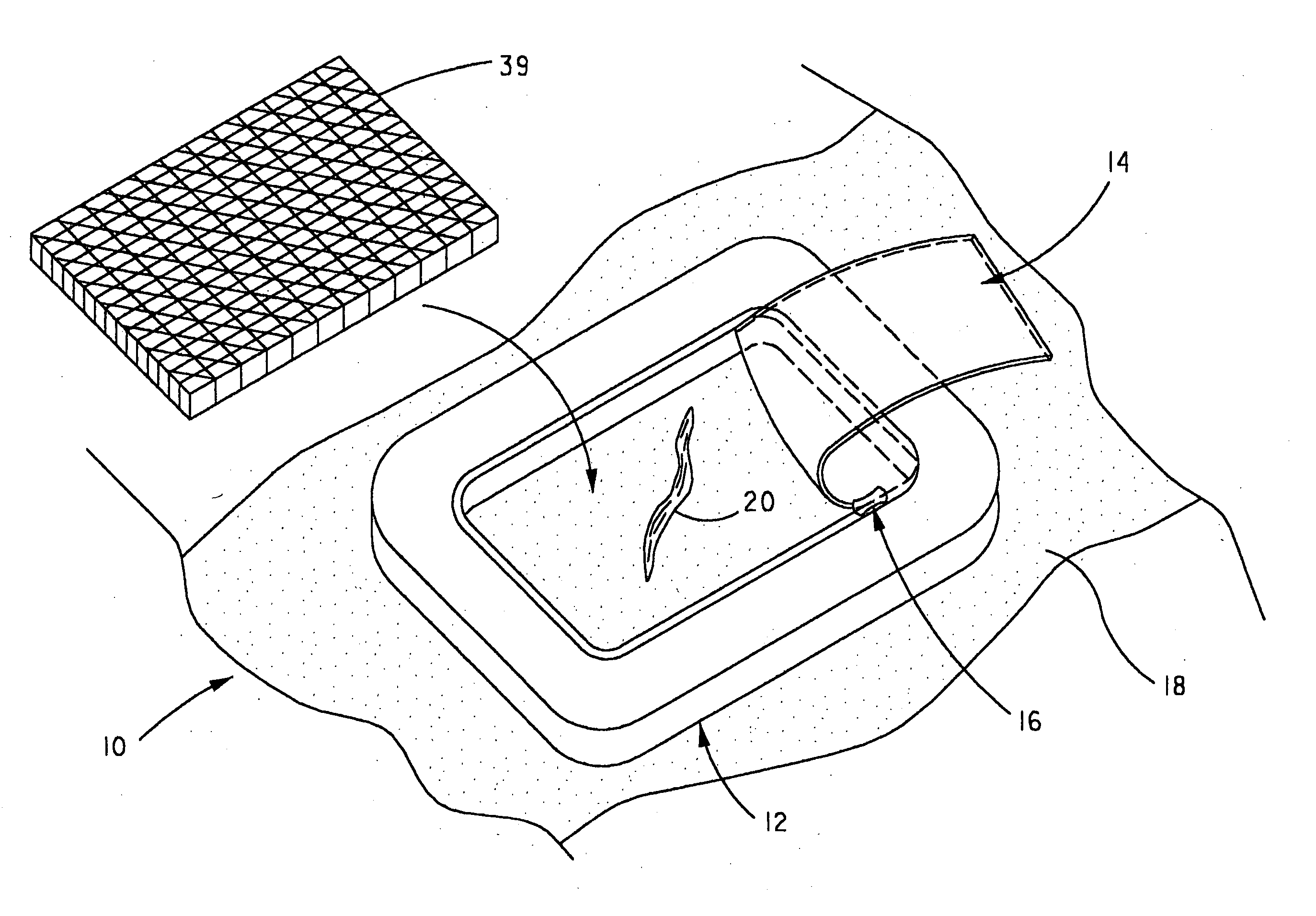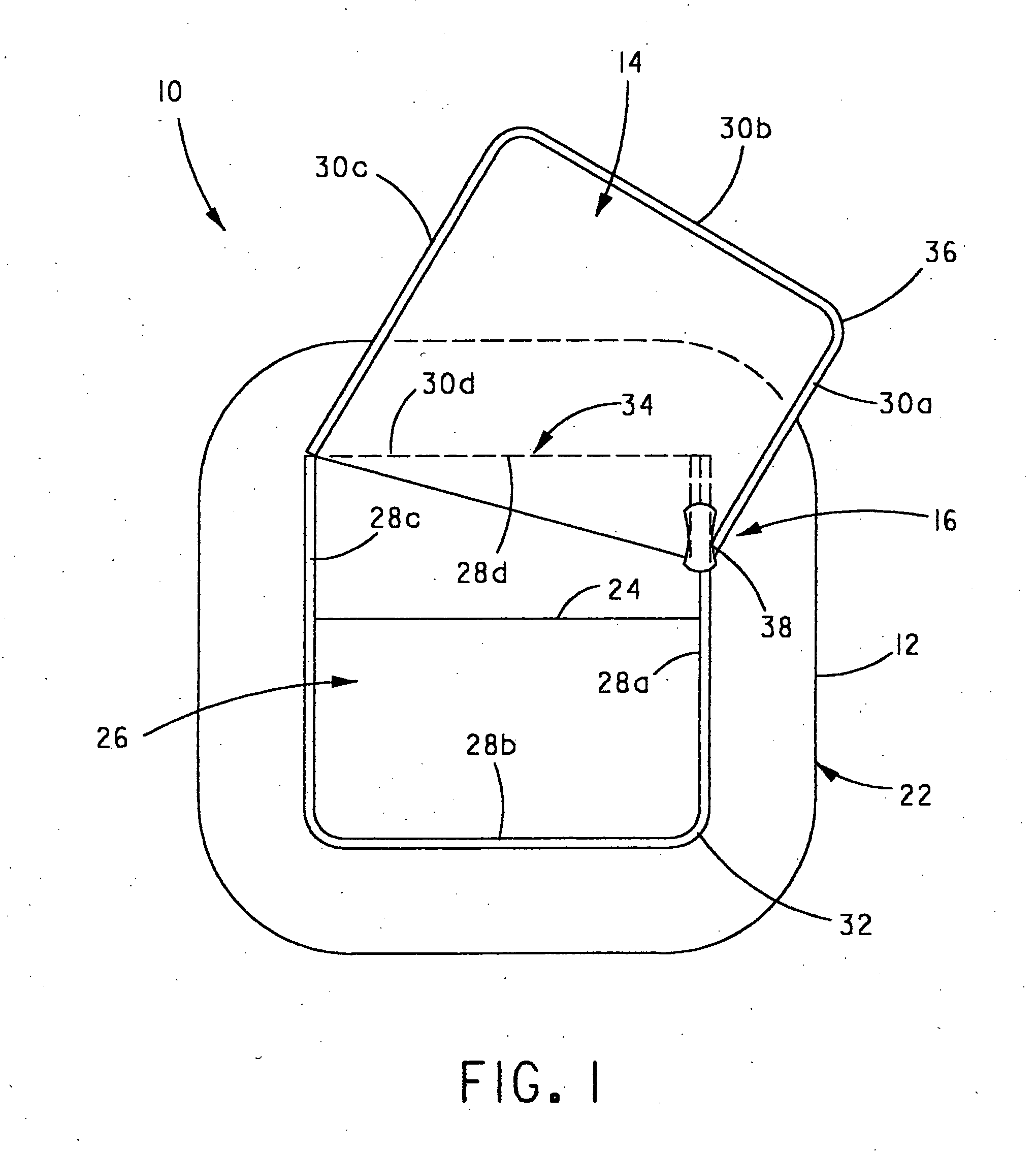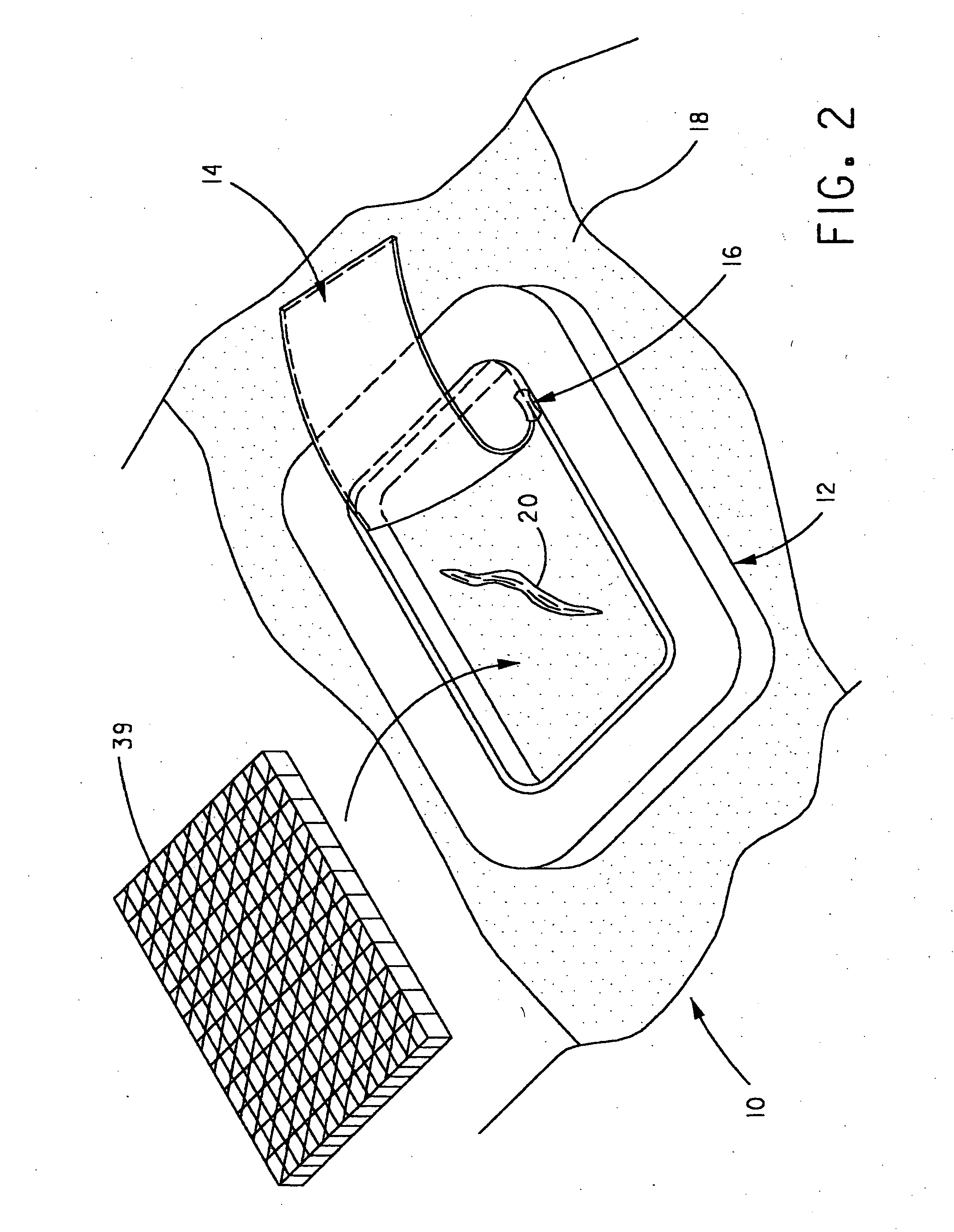Wound dressing retainer and fastening device
a technology for wound dressings and retainers, which is applied in the field of wound dressing retainers, can solve the problems of long time-consuming and laborious, wound dressings and dressing retainers, and the use of adhesive tapes for wound dressings, and achieve the effects of less labor or over-time, cost saving, and improved healing ra
- Summary
- Abstract
- Description
- Claims
- Application Information
AI Technical Summary
Benefits of technology
Problems solved by technology
Method used
Image
Examples
Embodiment Construction
[0015] For purposes of the description hereinafter, spatial or directional terms shall relate to the invention as it is oriented in the drawing figures. However, it is to be understood that the invention may assume various alternative variations, except where expressly specified to the contrary. It is also to be understood that the specific apparatus illustrated in the attached drawings, and described in the following specification, is simply an exemplary embodiment of the invention. Hence, specific dimensions and other physical characteristics related to the embodiments disclosed herein are not to be considered as limiting. [00141FIGS. 1 and 2 show a wound dressing retainer 10 that includes a frame 12, a flap 14, and a sealing mechanism 16 situated on an individual's skin 18 having a wound 20 thereon. Frame 12 is desirably constructed of a soft or semi-rigid, but flexible and elastic material, such as foam. Desirably, this material is conducive to applying wound dressing retainer 1...
PUM
 Login to View More
Login to View More Abstract
Description
Claims
Application Information
 Login to View More
Login to View More - R&D
- Intellectual Property
- Life Sciences
- Materials
- Tech Scout
- Unparalleled Data Quality
- Higher Quality Content
- 60% Fewer Hallucinations
Browse by: Latest US Patents, China's latest patents, Technical Efficacy Thesaurus, Application Domain, Technology Topic, Popular Technical Reports.
© 2025 PatSnap. All rights reserved.Legal|Privacy policy|Modern Slavery Act Transparency Statement|Sitemap|About US| Contact US: help@patsnap.com



